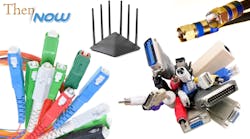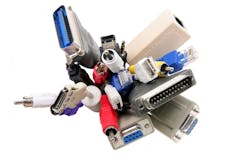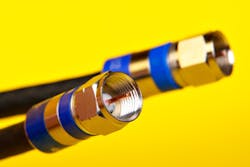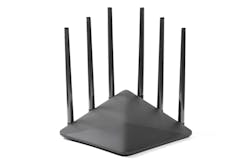A Quick Stroll Through 70 Years of Communications
This article is part of Then and Now in our Series Library and part of Electronic Design's 70th Anniversary series.
Processors and memory have changed radically over the past 70 years, but the variability of those areas doesn’t hold a candle to communications technology. I obviously can’t do it justice in such a short article, but I did want to highlight some of the major changes in wired and wireless communication.
Wired
On-board serial and parallel buses have been around for ages, and they’ve progressed significantly in terms of throughput. One of the most basic items—serial asynchronous communication—is a generation old yet still one of the most used interfaces on microcontrollers and motherboards.
Standards like RS-232 and CAN allow for cabling to be longer and more robust, and variations like multidrop solutions continue to be used regularly. Other serial interfaces like I2C and SPI have been pulling double duty as peripheral and memory interfaces. There are variations like Hyperbus, OneWire and I3C, too.
Parallel buses for motherboards (Fig. 1), such as the venerable Industry Standard Architecture (ISA) bus that ran at 8.3 MHz, morphed into the Extended Industry Standard Architecture (EISA). These were eventually replaced with Peripheral Component Interconnect (PCI). Versa Module Europa (VME) found a home in rugged environments, but all were superseded by high-speed serial interfaces.
PCI Express (PCIe) is the primary bus interface. Currently in its fifth generation, it runs at 32 Gtransfers/s with support for up to 32 lanes. This version also supports standards like CXL and CCIX that provide cache coherence on top of the PCIe peripheral support.
Local area networks have moved from 2.5-Mbit/s Arcnet and 10-Mbit/s Ethernet running over coax cables (Fig. 2) to twisted-pair and fiber-optic Ethernet, which now dominates the network space with speeds up to 400 Gbits/s being used on a regular basis. Fiber optics are no longer a specialty item (Fig. 3).
Modems used over voice lines have given way to cable modems using Data Over Cable Service Interface Specification (DOCSIS) as well as other standards including fiber connections.
Wireless
Wireless communication has changed the way we look at networking. Recently, the migration from any form of analog communication to digital is evident in the ubiquitous 5G cellular solutions being deployed. Voice and video still go over the airwaves; however, in a digital format that’s more conducive to the underlying communication infrastructure. AM/FM radio still endures, but television is now all digital and even AM/FM radio has a digital counterpart.
Wi-Fi has turned networking into something that was impossible with wired connections. It provides mobility and eliminates wiring so that networking can be deployed in existing spaces without major site modifications. Though still slower than the fastest wired connection even with multiple-input, multiple output (MIMO) support, it’s more than fast enough for most applications, including video streaming (Fig. 4).
The rise of low-power, wide-area networks (LPWANs) and other low-power network technologies such as Bluetooth, ZWave, Zigbee, and LoRaWAN, and cellular support like Narrowband IoT (NB-IoT), have been relatively recent enhancements looking over the past 70 years. The limiting factors continue to be speed, distance, and power where you can only minimize any two. Likewise, bandwidth allocation and regulation affect availability and performance.
This short ride through old and new communication systems leaves a lot out. Much of it is still in use even as newer, faster, and more secure solutions continue to emerge. What’s remarkable is the level of compatibility with the plethora of existing standards. It’s what has made these communication solutions workable.





